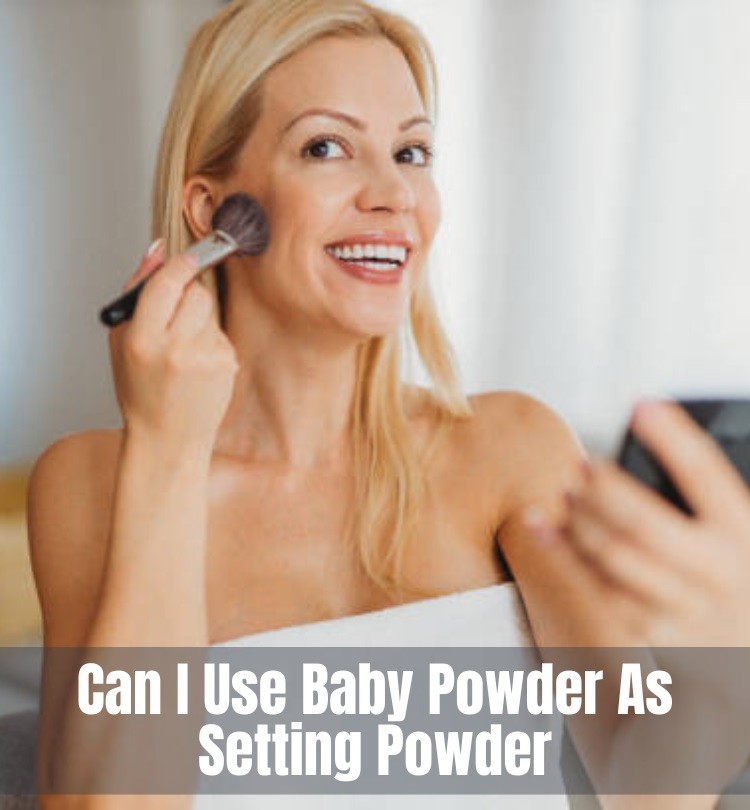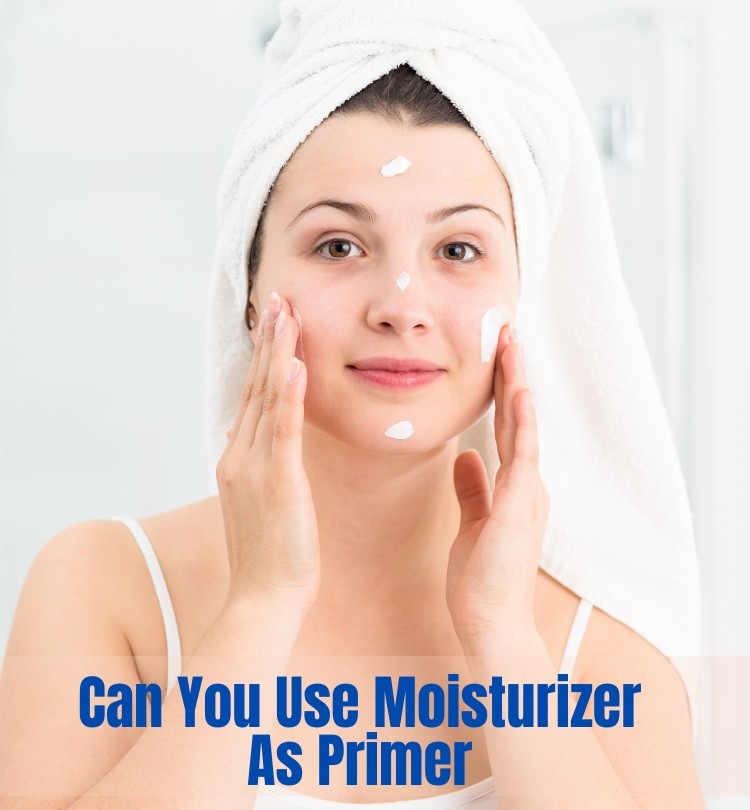This post contains affiliate links.
Updated on April 13, 2025
Yes, it is recommended to use a setting spray after setting powder to prevent makeup from shifting or melting throughout the day. Using setting spray after setting powder is a common technique in the makeup world that has been gaining popularity.
Setting powder helps to mattify the skin and set the makeup in place, but it can also leave a powdery or cakey look on the face. Setting spray is used to blend the powder into the skin and create a natural look.
A setting spray also helps makeup last longer and prevents it from fading or smudging. It is important to choose the right setting spray for your skin type and the occasion, whether it’s a wedding or an outdoor activity. We’ll delve deeper into the benefits and techniques of using setting spray after setting powder.
Contents
- The Basics Of Setting Powder And Setting Spray
- Advantages Of Using Setting Powder And Setting Spray
- Different Types Of Setting Powder And Setting Spray Available In The Market
- Tips On How To Apply Setting Powder And Setting Spray In Your Makeup Routine
- When And How To Use Setting Powder And Setting Spray Together
- Frequently Asked Questions
- Conclusion
The Basics Of Setting Powder And Setting Spray
Have you ever felt like your makeup disappears the moment you step outside? Using setting powder and spray can help keep your makeup in place all day long. Do you know how they work? In this blog post, we will go over the basics of setting powder and setting spray and their functions.
Definition Of Setting Powder
Setting powder is a finely milled powder that helps to set makeup in place.
- It comes in two forms: Loose and pressed.
- The powder’s main purpose is to absorb excess oil, reducing shine and giving your makeup a matte finish.
- Setting powder also helps to blur the appearance of fine lines, wrinkles, and pores.
Related: Can You Use Primer Without Makeup?
How Does Setting Powder Work?
- The powder contains non-comedogenic ingredients that help to prevent clogging pores.
- It acts as a barrier between your skin and the environment, preventing your makeup from smudging or fading away.
- Setting powder extends the wear time of your makeup while keeping it in place.
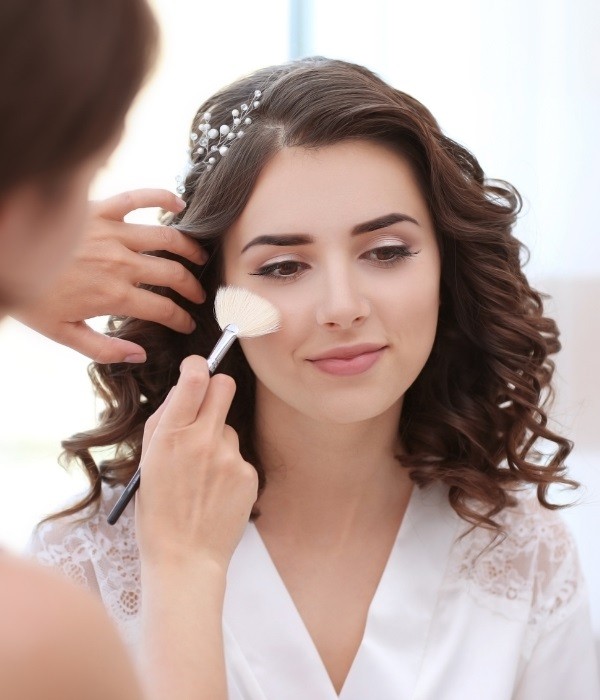
Definition Of Setting Spray
Setting spray is a mist that is sprayed on top of makeup to keep it in place.
- It is also available in two forms: Aerosol and non-aerosol.
- Setting spray is enriched with hydrating ingredients that help keep your makeup looking fresh and radiant.
How Does Setting Spray Work?
- The lightweight mist seals makeup in place, preventing it from smudging, fading, or transferring.
- Setting spray locks in moisture, preventing your skin from looking dry or flaky.
- It also helps to regulate oil production, making it ideal for those with oily skin.
Using both setting powder and setting spray can make a big difference in the longevity and appearance of your makeup. The powder helps to set makeup in place and reduce shine while setting spray provides an extra layer of protection.
Using these products together can help your makeup last all day long and keep you looking radiant and fresh.
Advantages Of Using Setting Powder And Setting Spray
Setting powder and setting sprays are well-known among makeup enthusiasts in the beauty industry. Both makeup products are essential to complete the overall makeup look. Some people often ask if they should use a setting spray after setting powder or not.
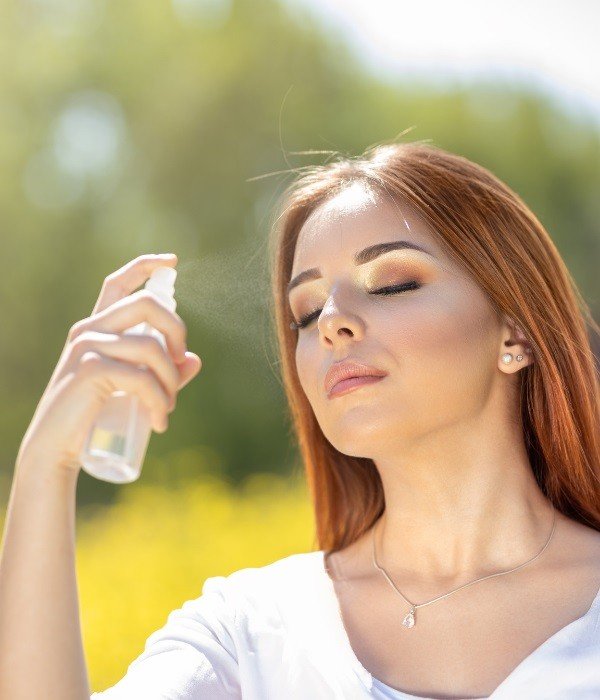
Benefits Of Using Setting Powder
Setting powder is an incredible makeup product with several benefits. Check out some of the substantial advantages of using setting powder:
- Setting powder works best for oily skin as it helps control excessive oil secretion.
- It minimizes the appearance of pores and fine lines on the face, giving the skin a perfect finish.
- Setting powder helps your makeup last longer, avoiding unnecessary touch-ups.
Benefits Of Using Setting Spray
Like setting powders, setting sprays are advantageous in several ways, which include:
- Setting sprays can help hydrate your skin, particularly when you use them after makeup application.
- It’s a perfect way to ensure that your makeup remains intact and doesn’t smudge even after sweating or moving around.
- Setting sprays work effectively for people with dry skin as it helps keep their skin moisturized throughout the day.
How Combining Both Can Enhance Your Makeup Look?
The advantages of using setting powder and setting spray are undeniable. Using these two products together can take your makeup look to the next level. Below are some benefits of combining setting powder and setting spray:
- By using setting powder first, you can lock in your liquid foundation, giving it a matte appearance and making sure it lasts longer. You can use a fluffy brush to apply the powder.
- Afterward, use a setting spray to set your makeup and keep it in place, avoiding the need for frequent touch-ups.
- Using both products together will allow your makeup to stay flawless and smudge-free throughout the day.
Using setting powder and setting sprays together can significantly enhance your makeup look, giving you an all-day flawless appearance. It’s a perfect combination for people with dry or oily skin, and it can benefit everyone when used correctly.
Related: How To Get Primer Off Skin?
Different Types Of Setting Powder And Setting Spray Available In The Market
If you’re someone who loves to apply makeup, it’s essential to choose the right products to keep it intact for as long as possible. Setting spray and setting powder work wonders in locking your makeup in place and keeping it smudge-free for several hours.
Confusion arises in understanding which product to use first and which one to follow up with. In this blog post, we’ll elaborate on the different types of setting powders and setting sprays available in the market.
Different Variations Of Setting Powder
Setting powder helps in absorbing excess oil and giving your skin a matte finish, thereby making it look smoother and brighter. Here are some different variations of setting powders you can find in the market:
- Loose powder: Loose powder helps in controlling oil production while giving you a natural finish. It’s available in different shades to suit your skin tone.
- Pressed powder: Pressed powder is easy to carry and can quickly touch up your makeup throughout the day. It’s best for normal to oily skin types.
- Translucent powder: Translucent powder helps in setting your makeup without altering the color of your foundation. It’s ideal for everyday use as it doesn’t add extra coverage or color.
- Colored powder: Colored powders are suitable for those who prefer additional coverage, and it can be found in different shades and finishes.
Different Variations Of Setting Spray
Setting sprays are used to set your makeup and keep it looking fresh for long hours. Here are some different variations of setting sprays you can find in the market:
- Dewy finish spray: Dewy finish sprays are perfect for those with dry skin as it adds a subtle glow and hydrates the skin.
- Matte finish spray: Matte finish spray is suitable for oily skin types as it helps in controlling oil production.
- Hydrating spray: Hydrating spray is best for those with dry skin as it adds additional hydration and can be used throughout the day.
- Oil control spray: Oil control spray is suitable for those with oily skin as it helps in keeping the skin matte and prevents oil production.
The choice between setting powder and setting spray depends on your personal preference and skin type. Using them both is an excellent option for those who want their makeup to look perfect all day. We hope this blog post helped you understand the differences between various setting powders and setting sprays available in the market, and you can choose the ones that suit your preferences.
Tips On How To Apply Setting Powder And Setting Spray In Your Makeup Routine
Achieving a perfect makeup look can be a daunting task, and making sure that it lasts all day is even more challenging. One of the most common solutions is using setting powder and setting spray. But, do you know how to apply each of them and when to apply each product in your makeup routine?
Below are some tips on how to properly use these two products to make your makeup look flawless all day long.
How To Apply Setting Powder?
Setting powder is every makeup lover’s bff when it comes to keeping your foundation in place, minimizing shine, and blurring out imperfections. But, how do you properly apply it?
Follow these simple steps for a flawless finish:
- Take a fluffy powder brush and sweep it over the powder. Tap any excess powder off.
- Apply the powder by pressing and rolling the brush over your face, focusing on the areas where your makeup tends to crease, such as around your nose, under your eyes, and forehead.
- To avoid creasing, wait a couple of minutes before dusting off the excess powder with a clean brush.
How To Apply Setting Spray?
Setting spray is a lifesaver when it comes to keeping your makeup in place all day and preventing it from melting off in hot weather. But, do you know how to apply it?
Follow these simple steps for a flawless finish:
- Hold the setting spray about eight to ten inches away from your face.
- Close your eyes, make a “t” shape with your face, and then “x” shape to ensure full coverage.
- Wait for a minute or two to allow the setting spray to dry before resuming regular activities.
When To Apply Each Product In Your Makeup Routine?
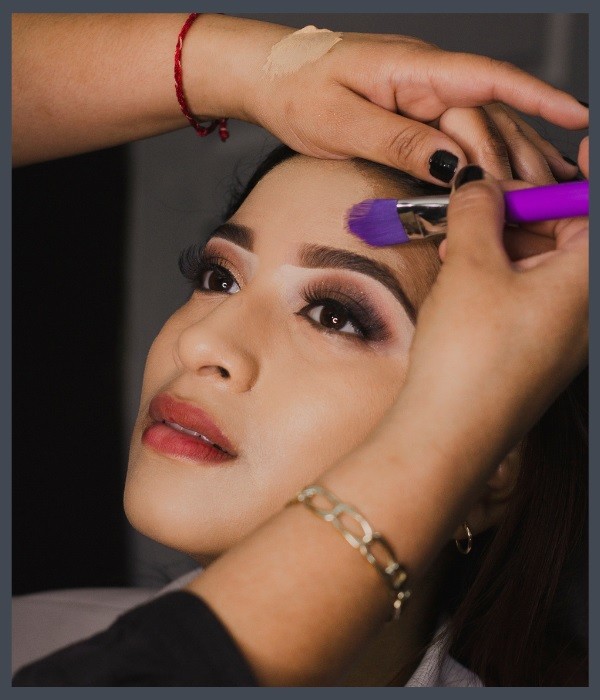
Knowing when to apply each product in your makeup routine can make all the difference when it comes to making your makeup look flawless and last all day. But, how do you know which one to apply first?
Follow these simple steps for a flawless finish:
- Start by applying your foundation, concealer, and other makeup products.
- Apply setting spray after you finish your overall makeup look but before mascara and lipstick. This step helps keep your makeup intact and prevents it from melting due to heat, humidity, and natural oils.
Using setting powder and setting spray can help you achieve a flawless look that will last all day long. With these simple tips, you will be able to use these products like a pro, making your makeup look flawless and intact all day long.
Don’t forget to try these steps and see the difference yourself!
Related: What Can I Use Instead Of Primer?
When And How To Use Setting Powder And Setting Spray Together
Setting powder and setting spray are essential products in your makeup arsenal. They help you achieve a flawless, long-lasting finish, giving you the confidence to flaunt your makeup look all day long. While both products serve a similar purpose, it’s crucial to understand when and how to use them together to enhance the durability of your makeup.
Setting powder and setting spray alone can help set your makeup, but together, they create a makeup look that lasts all day. Here’s what you need to know about using them together.
Can Setting Spray Be Used Without Setting Powder?
Yes, you can use a setting spray without setting powder. Using both together ensures that your makeup lasts even longer. Setting spray is ideal for those who prefer a dewy finish while setting powder is perfect for those who want a matte finish.
The Benefits Of Using Both Together
When used together, setting powder and setting spray enhances the durability of your makeup by creating a barrier that locks in your makeup. Here are some benefits of using both products together:
- Reduces shine: Setting powder helps absorb excess oils on the skin, reducing shine and making your makeup look fresh all day.
- Waterproof: Setting spray creates a waterproof barrier that prevents your makeup from smudging due to sweat or humidity.
- Long-lasting: The combination of setting powder and setting spray ensures that your makeup lasts all day, saving you the hassle of having to touch up frequently.
Best Tips To Effectively Use Both Products
While setting powder and setting spray work hand in hand, there are a few tips to ensure that you get the most out of both products.
- Use setting powder first: Apply your makeup as usual, then set it with setting powder to create a smooth, matte finish.
- Use the setting spray as a final step: Once you’ve applied your makeup and set it with setting powder, finish off with setting spray to lock in your makeup.
- Choose the right products: Select a setting powder and setting spray that work best for your skin type and desired finish.
- Apply in layers: Apply setting powder and setting spray in thin layers to avoid caking and ensure your makeup looks natural.
Understanding when and how to use setting powder and setting spray together can drastically improve the durability of your makeup. By using both products together and following the tips mentioned above, you can achieve a flawless, long-lasting makeup look that’ll make you feel confident and beautiful all day.
Frequently Asked Questions
What Is Setting Spray?
Setting spray keeps the makeup intact for longer periods and enhances its longevity.
Can Setting Spray Be Used Without Setting Powder?
Yes, the setting spray can be used without setting powder, but it may not work as intended.
When Should You Use Setting Spray And Setting Powder?
After you finish applying makeup, use setting powder, and setting spray to set and prolong makeup wear.
Can Setting Spray Replace Setting Powder?
Setting sprays and setting powders serve different purposes, and one cannot replace the other.
How To Apply Setting Spray After Setting Powder?
Spray from a distance, let it dry and avoid moving your face while the spray settles.
Conclusion
After considering the benefits and drawbacks of using setting spray after setting powder, it is ultimately up to personal preference and skin type. For oily or combination skin, using the two together can provide a long-lasting, matte finish. For dry or sensitive skin, it may be too drying or irritating.
It’s important to consider the ingredients in both products and test them out to see what works best for your skin. Additionally, it’s important to note that setting spray should never replace the use of sunscreen in your skincare routine.
Overall, using setting spray after setting powder can enhance the longevity and finish of your makeup, but it’s important to weigh the pros and cons for your individual skin type. Don’t be afraid to experiment and find what works best for you.

